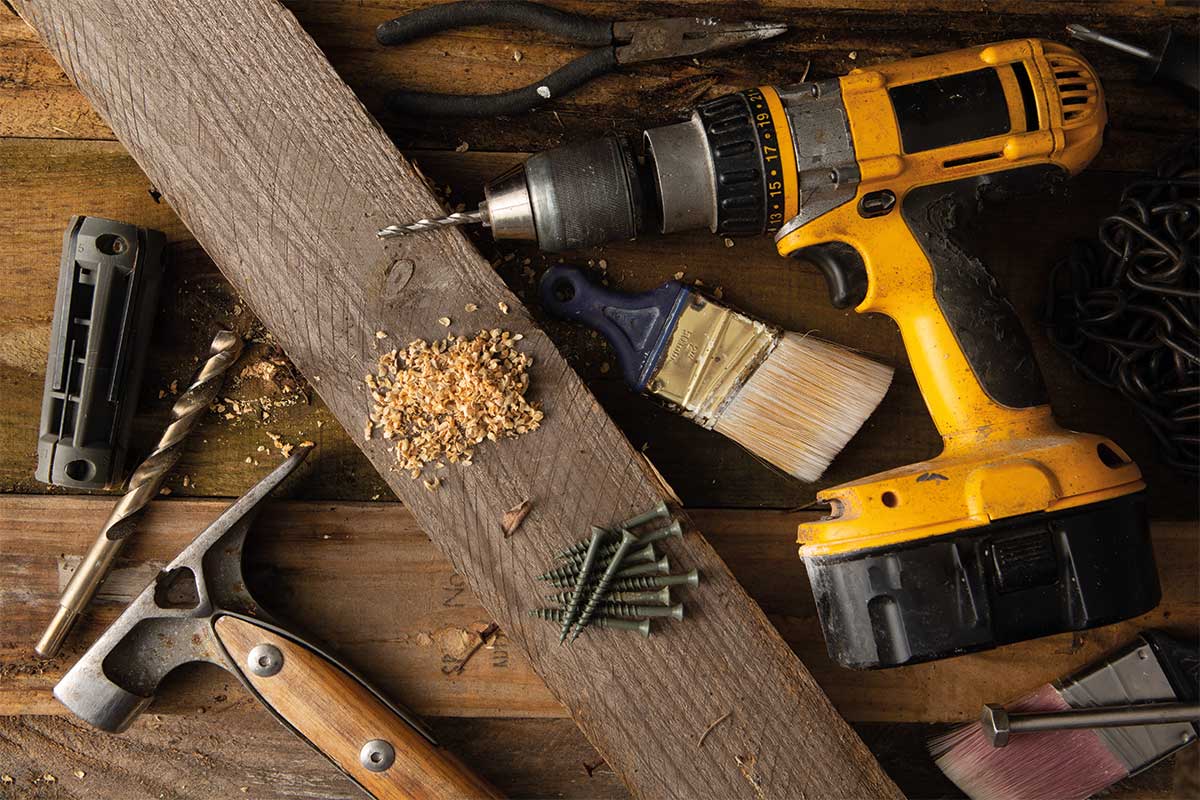
PropertyWorkshop.com’s Neil Cumins discusses the best timbers to use for specific DIY jobs, from decking to cabinetmaking
Choosing the right timber for a DIY job is an aspect of renovation project planning many people overlook. Some will default to the same type of wood time and again, while others might mistakenly dismiss a particular type of timber as being somehow unsuitable. Yet while the differences between different hardwoods and softwoods isn’t as great as you might think, there are certain timbers which are particularly well suited to specific uses.
In this article, we consider the best choices for scenarios as diverse as cabinetry and cladding. We also offer recommendations on how to preserve and maintain your chosen timber once it’s been cut, since an effective treatment can increase both longevity and aesthetic appeal. With so many different products on today’s market, choosing the right solution for specific situations is a key element of any DIY project.

External cladding
Our choice: Cedar
Cedar’s appearance and durability has made it a favourite among construction firms and self-builders alike. As a softwood, it’s less prone to cracking amid temperature changes, which is helpful given the increasing volatility of our climate. A well-treated and properly weathered cedar can last for 20 years, and its lifespan will be extended with a transparent, tinted coat of Osmo UV-Protection Oil Tints 428 Red Cedar.

Decking
Our choice: Redwood
In many respects, redwood represents a perfect choice for decking. It’s readily available, affordably priced, hardwearing and decay resistant. To increase protection against rot, fungus and insect attack, the use of Osmo WR Base Coat should be considered. It will withstand the pressure of high heels and shrug off the worst excesses a British winter can throw at it. Our decking oil is water and dirt-resistant, but it doesn’t detract from the characterful nature of redwood planks.
Furniture making
Our choice: Oak
There’s a reason why several furniture companies have the word ‘oak’ in their names. Simply put, there are few timbers with oak’s aesthetic appeal, let alone its strength. If you’re a professional furniture maker, Osmo 2K Wood Oil offers a one coat, quick curing and VOC-free solution.

Wall panelling
Our choice: Walnut
Oak might be the default timber for home (and home office) furnishings, but walnut is a durable choice for walls. Its dense texture ensures impressive durability, yet it’s lighter than rosewood or cherry. Given a treatment of our WWF Wood Wax Finish (or WWF Clear Extra Thin for more exotic walnuts like Brazilian), domestic walnut can maintain its glossy appearance and distinctive grain.
Cabinetry
Our choice: Mahogany
Mahogany is a costly and often unyielding hardwood to work with, but if you can forgive its blade-blunting obduracy, its warmth and beauty is ideal for wall-mounted display units, shelving and cabinets. Apply a coating of Osmo Wood Wax Finish Clear Extra Thin, and a mahogany cabinet will practically glow with health while slowly darkening.
A note on densities
It’s worth noting that the same type of timber can have varying densities depending on how and where it was grown, and which species of tree it was sourced from. Slow-growing or more mature trees tend to deliver higher density, making them better suited for hardwearing duties.

Contact the Osmo Advice Team directly on 01296 481220.
Find out more about Property Workshop.


